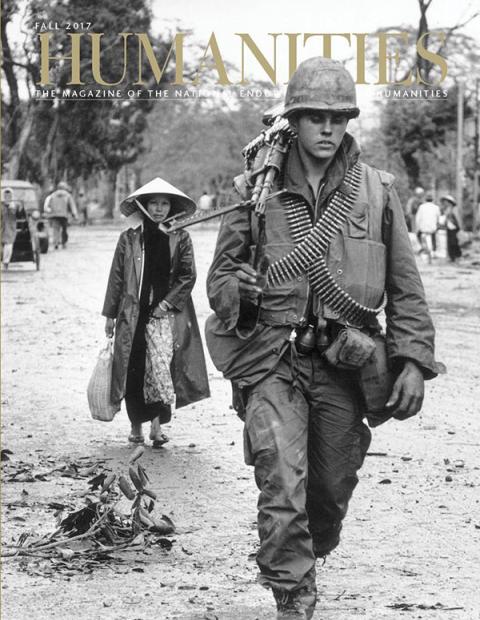A ragtag group of Minnesotans were cold, wet, and quiet as they tried to arrange themselves in a circle beneath a narrow canopy, just beyond the reach of a soaking rain that had followed them all day.
It was hard to avoid jostling the person standing next to you while staying clear of the muddy, ankle-deep puddles, where the ground had been worn down around a red pipestone memorial. But the high school students, retired teachers, history buffs, and recent transplants to the Twin Cities did their best as they listened carefully to Ramona Kitto Stately speak about the Dakota people who had been imprisoned nearby after the U.S.–Dakota War of 1862—including’s Stately’s great-great- grandmother.
Many of the listeners had visited this state park and the nearby historic fort before, as almost all lived within 30 miles of the site. Few, however, had heard of the internment camp, and none knew about the place’s spiritual and historical significance to the Dakota, which predated European settlement by centuries.
This is the Minnesota Humanities Center’s Bdote Field Trip, which takes a yellow school bus full of people to Dakota sites in and around the Twin Cities. Stops include Indian Mounds Regional Park, Wakan Tipi cave and the Bruce Vento Nature Sanctuary, Historic Fort Snelling, Fort Snelling State Park, and Pilot Knob.
At each stop, there’s time to wander, reflect, and explore as Native-American scholars discuss the land’s connection to the Dakota people.
“Knowing your place is important. Where you are informs who you are,” said Mona Smith, a Sisseton-Wahpeton Dakota artist who created the Bdote Memory Map, which serves as the foundation of the Bdote Field Trips. The online, interactive tool lets people remotely access information about Dakota sites throughout the metro area. The map offers videos about the places, Dakota history and myths, and the concentration camp. There are resources for teachers, historical photographs and paintings, and even an audio glossary for many of the Dakota words used on the site. (By the way, if you weren’t sure, bdote is pronounced ba-dote-tay, with the emphasis on dote.)
So many sites of significance are clustered together because of the bdote, or coming together, of the Minnesota and Mississippi rivers, which to the Dakota is the ancestral birthplace of their people and the center of their world in oral tradition, Smith said.
Much of that has been forgotten, however, and is easy to overlook in a bustling, urban area, even though the Twin Cities and surrounding communities are peppered with Dakota place names, Smith said.
“Minnesota” itself is derived from the Dakota “Mnisota,” which translates to “sky-tinted waters.” Nearby Winona and Chaska derive from “Winuna” and “Caske,” names traditionally given to the firstborn daughters and sons of Dakota families.
“That was the language of Minnesota for 12,000 years. That is the language that this land knows,” Stately said.
The first field trips, started in 2013, were specifically intended for educators teaching Minnesota history to elementary students. After taking part, teachers could share what they learned with their pupils and lead field trips of their own. But the interest was far broader, and the field trips were opened to the public in 2015.
More than 450 people from the general public have participated in the program, with additional thousands of children from St. Paul Public Schools attending field trips led by trained teachers and hosted by the district’s Center for Equity and Culture.
“Some of the sites the students visit are familiar, but they didn’t know the Dakota history, and it’s the same with the teachers,” coordinator Sherry Kempf explained. “Before I got involved, I had no idea of the history that is right here where we live. . . . It really impacts how they’re teaching history and how their students are learning history.”
The field trips bring knowledge and understanding through personal anecdotes, histories, and legends told in English and Dakota. Many participants on the trip spoke of their desire to connect more deeply with the place where they live and make up for significant gaps in their historical knowledge.
That was the primary reason for the swarm of high schoolers in attendance, explained Unity North Spiritual Center’s Carol Kniskern, one of several local religious leaders accompanying youth groups on the field trip.
When the church’s student group began conducting service projects to benefit children on reservations in South Dakota a few years ago, they were astonished to learn about a way of life so different from theirs, but so close to home, she said.
“And now we’re getting even closer,” Kniskern said. “In their minds, these things are going on somewhere far away, but you don’t even have to go to the next state. We live next to people and don’t know them. We don’t know their culture, we don’t understand.”
*This article was updated on October 19, 2017, to reflect a corrected quote from Ramona Stately stating that the language of Minnesota has known for 12,000 years instead of 1,200 years.


